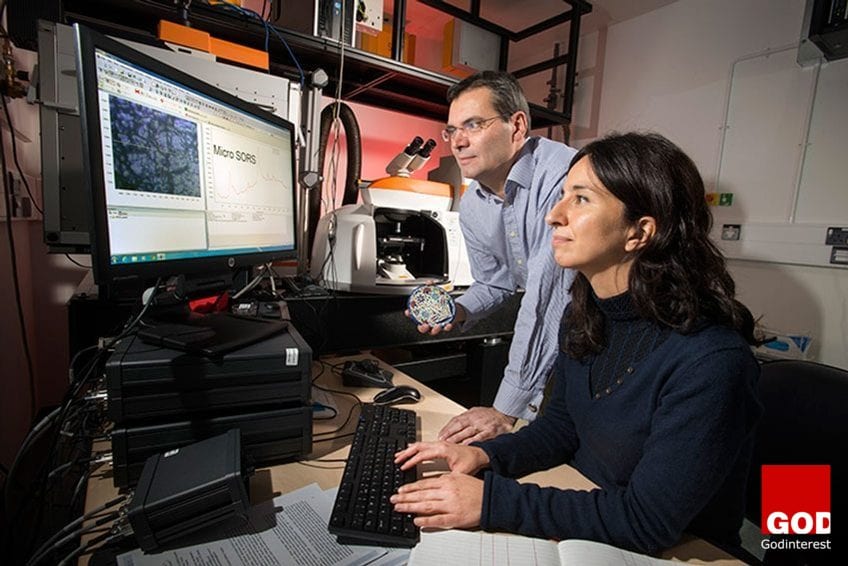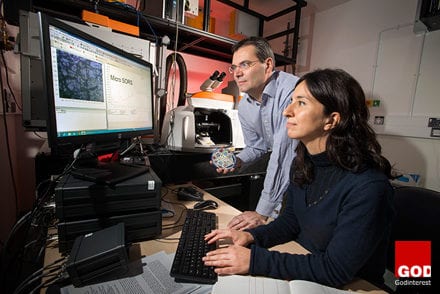https://tolmission.com/2022/12/03/how-does-technology-affect-your-spirituality/ In both its practical and technological forms, technology has become an intrinsic element of contemporary civilization. In our daily lives, we utilize technology not just for communication and enjoyment, but also for education and inquiry. However, for many individuals, technology may also be a source of tension, especially when it comes to spiritual topics. With the power of the internet, we can now access any type of information with a single click. This has profoundly altered our interactions with religion and spirituality, affording us more options than ever before. However, although it may be a useful tool for advancing our understanding of religion and belief, it can also be a cause of misunderstanding and conflict.
The Best Four Options for Christian Web Hosting in 2022
Companies that Provide Web Hosting and Uphold Christian Values—Our Preferred Choices
Christian web hosting is a topic that seems to be on the minds of many who are wanting to host a website with a Christian firm, as seen by the numerous inquiries we’ve had about it this year.
Many Christians who are looking to host a website enjoy working with a business that shares their views and has high moral standards. You presumably arrived at this page because you are a steadfast Christian who manages or builds websites. The good news is that we’re here to dispel ambiguity!
As professionals in the web hosting sector, we decided to develop a directory of Christian web hosts to assist Christians in making an informed choice about which hosting providers they can rely on to uphold their basic principles and deliver excellent service.
Christian Web Hosting Companies vs. Secular Businesses
We recognize how crucial it is for Christians to work with hosting providers that share their principles, but also have a high standard of service. Meaning that just because you choose a Christian web hosting company, this should not be at the expense of quality of service. No to the country, as Christians we ourselves are called to have a high standard in everything we do. So therefore a Christian organisation that does not adhere to high standards in the first place should not to chosen purely on the basis of identifying as a Christian hosting provider.
So what does a Christian do? It can appear that you only have two options:
Choose a publicly visible Christian host at the expense of service, security, features, etc or
select a business that offers excellent service but does not uphold Christian principles.
We advise following Jesus’ advice and trying to firstly find a Christian organisation that fulfils the core principles as it is our duty to support our brothers and sisters in Christ, and your search is not successful then although not identifying as strictly a Christian company on the outside, to locate a company that produces results consistent with the high standards you deserve. Again with that being said, if there was a choice between two companies with high standards and one happened to be a Christian company, then we should definitely go with the one that identifies as a Christian organisation. We should always support our brothers and sisters in christ we’re possible. And remember, that even the largest web hosting companies had to start somewhere. They will refuse to recount the days when they struggled to get to the top. The Christian journey is a struggle all by itself. So it would be very hard-nosed to expect a newly established Christian hosting company to compete with one of the giants immediately without your support.
Jesus’ remark in Matthew 7:15–20 is well-known.
These businesses actually include Christian staff members and are very engaged in working on philanthropic issues that actively match the essential beliefs of the Christian religion and the teachings of Jesus, despite the fact that they don’t all publicly identify as Christian hosting. Let’s look at a few of those businesses.
Our Favorite Web Hosting Providers: Christian Values
The following are our top picks for Christian web hosts that, in our opinion, best represent the teachings of Jesus Christ:
DomainRooster No. 1 (Best Value & Most Affordable)
The most popular host on our website, DomainRooster is a newly established web hosting company. The lowest web hosting plan starts at $2.95/month!
The nicest part about them is that they’re one of the few hosts with US-based and UK-based telephone help available around the clock. They offer outstanding security and WordPress features.
DomainRooster has a solid moral foundation and abides by the teachings of Jesus; no websites that contain adult content, nudity (including artistic photos), or sell any adult-oriented goods are permitted on its servers. The company CEO is also a devoted Christian.
SiteGround, #2
On our website, SiteGround is the second most well-liked host, and they are excellent! They are one of our absolute favourites and have outstanding technology and customer service. We adore them since they have the quickest support response time of any host in their category.
You can get their services for a ridiculously low price of only around $6.99/month.
They also have a solid moral basis that adheres to Jesus’ teachings since they forbid gambling websites, pornographic content on their servers, and other websites that promote immoral behaviour. They follow the golden rule (treat others as you would like to be treated) and engage in a ton of charitable activities.
Go to SiteGround.
WP Engine #3
WP Engine is the best option available for WordPress hosting services (although they are a bit more costly than DomainRooster or SiteGround). With a ton of incredible features designed just for WordPress, like caching, staging servers, and insanely strong backups, they are pretty much the best of the best when it comes to WordPress hosting.
WP Engine has a solid moral foundation and upholds the teachings of Jesus by forbidding the hosting of websites that promote gambling, adult material, and other harmful vices. Additionally, they care for one another by managing a “Give Back Committee” that coordinates charitable giving and volunteerism for various organizations.
Go to WP Engine.
Netooze #4
Netooze is the best option available for cloud hosting services and is unbelievably one of the most affordable cloud hosting providers today. With a ton of incredible cloud hosting features they provide infrastructure as a service, vStack servers, VMware servers, Kubernetes, DNS management, networking, RDP, and insanely strong backups, they are pretty much the best of the best when it comes to cloud hosting today.
Netooze CEO is also a devoted Christian who has embedded Christian principles in the development of this state-of-the-art cloud hosting platform
Go to Netooze
Are You Too Busy To Be A Blessing?
It’s easy to get so consumed with all the obligations we have on a daily basis. Zoom, mobile phones, computers, the internet have all made it so much easier to pack more into our days. And while technology is a great blessing to us, we have to remember that how much we get done, isn’t as important as how we treat others. At these uncertain times, we should never be so focused on ploughing through our “to do” list that we mistakenly plough past the people in our lives.
Today’s verse in Ephesians simply reminds us to be kind, compassionate and forgiving. If people had to be reminded back in those times, how much more do we need to be reminded today! We should always be on the lookout for ways we can be kind to one another, share a smile with someone or an encouraging word, maybe meet a need.
Today, as a believer, you are the hands and feet of Christ. Look for ways to serve one another, not only those you know, but even the stranger that crosses your path. Sow a seed of kindness, and watch the harvest of blessing in your own life in return!
“Be kind and compassionate to one another, forgiving each other, just as in Christ God forgave you.” (Ephesians 4:32, NIV)
Ler’s Pray
Yahweh, thank You for another day to live for You. Father, help me during this time of lockdown and isolation to not be too busy to bless others. God, teach me creative ways to show kindness to the people You’ve put in my life. Lord, show me ways today that I can sow seeds and be a blessing to others. Almighty God, thank You for equipping me to be Your representative and live in victory in every area of my life, in Christ’s Name! Amen.
The Seabin Project: the Debris-Sucking Saviour of the Oceans
Is Project “Management”’”¹ the Problem?
Does ‘The Image of God’ Extend to Robots, Too?
Inside a railway arch in Brixton, a piece of history was brought back to life. First built in 1928 by Captain Richards & A.H. Reffell, Eric is one of the UK’s first robots. Eric’s design was relatively simple. He was automated, but the interesting thing about Eric is how much extra stuff people read into him. Ingenious electrical instruments enabled Eric to hear questions and answer in a human voice.
On September 28 1928 Eric stood up at the Royal Horticultural Hall, bowed, looked right and left and moved his hands as he proceeded to give an opening address as sparks flashed from his teeth.
The New York Press described Eric as the “perfect man,“ built less than a decade after the word robot was used for the first time, Eric toured the world with his makers but then vanished, seemingly forever.
Nobody knows if the robot was thrown out, or lost, but it’s apparent that Eric once lauded for his technical prowess became an early victim of technological obsolescence. He may have no longer been needed or wanted even though he may have still been in working order.
In May 2016, over 800 Kickstarters investors campaigned to bring Eric back to life. Roboticist and artist Giles Walker created a replica of Eric using just a handful of archived news cuttings, pictures, and video. The robot is built with the same finesse as modern robots but purposefully lacks their capabilities. Eric is controlled by a pre-programmed sequence, using software similar to that used for controlling lights in theatres.
By resurrecting Eric, Russell and Walker want to make people reevaluate the place of robots within our history and society at large.
Commissioned by the Science Museum and funded through a successful £51,000 Kickstarter campaign, Eric is on display at the South Kensington museum ahead of a Robots exhibition in 2017 and will thereafter tour the world just like he did more than 90 years ago.
The new exhibition will feature more than 100 robots, from a 16th-century mechanical monk to robots from science fiction and modern-day research labs.
In whose image are robots made?
According to Russell, Curator, London Science Museum the answer seems to be “ourselves.”
Robots are almost like mirrors, they reflect back on ourselves, tell us who we areBen Russell, Curator, London Science Museum
As research into artificial intelligence continues, we will continue on the path of making artificial intelligence (AI) in our image. But can Christian thought provide an alternative approach to how robots are made?
The original Eric is a product of a time when an intelligent robot was still a far-off possibility. At the time, filmmakers and audiences treated these robots instrumentally; there was little sympathy for the robot dead.
Times, however, have changed. Christopher Orr, writing in The Atlantic, notes that there is a major philosophical shift in the newest version of Westworld: A shift from concern for the creators, made of flesh and blood, to concern for the created, made of steel and silicon.
BPS World Research Highlights Challenges Facing Employers in 2017 Following Brexit
Global resourcing specialist BPS World has warned that one of the main challenges facing employers in the UK in 2017 will be the impact of Brexit on the ability to attract talent, particularly in the high-value digital, technical and engineering industries where recruiters are already struggling with severe skills shortages. This follows the publication by BPS World, of: “Brexit: What the World is Saying” which, for the first time, researched the global impact of Brexit and how other countries believe it will impact on skills.
Simon Conington, Founder of BPS World, has urged the government to ensure that the UK continues to have access to skilled professional from Europe, particularly in the sectors where there are already skills shortages, or face a sharp decline in the UK’s ability to compete.
Although the UK will not be leaving the EU until 2019 we can expect an announcement this year on the shape of Brexit and what it will mean in practice. Under so-called ‘hard-Brexit’ freedom of movement would be restricted and it would be as difficult for talent to be recruited from France as from the US. It is this that alarms those at the sharp end of skills shortages, such as BPS World. Recruits themselves are already showing signs of being aware of these new competitive forces: research revealed that almost half (48 per cent) of UK jobseekers were more concerned about finding a job than before the referendum.
Last year BPS World spoke to business leaders, representative bodies and professionals in the recruitment and retention sectors in Europe, India, Australia and the USA. The research focussed on the sectors most affected by skills shortages in the UK and overseas. It is in these sectors that the impact of Brexit and any restrictions or changes to work permits, is likely to be most keenly felt.
One of those they spoke to was Marco Dadomo, from the Verein Deutscher Ingenieure (VDI, Association of German Engineers) in Düsseldorf: “As we know, Britain has already problems finding enough specialists in this sector. Brexit will make it less attractive for international experts to work in Britain for a British company. We have also heard that quite a lot of UK experts of different sectors plan to leave Britain when Brexit will be implemented.”
Simon Conington, Founder of BPS World argued;
“2017 is going to be a pivotal year for the UK economy. The decisions the government makes now on the implementation of Brexit will affect our ability to attract the talent we need to grow. The impact will be felt immediately as talent will not come to the UK if they know they will have to leave within two years. We urge the government to continue to ensure we have access to skilled people, particularly in sectors where we’re already struggling to find the talent we need.”
Kevin Green, Chief Executive of the REC welcomed the report:
“This review of the international community’s fears and needs following the EU referendum contains warnings about the challenges employers could face in the future. The prospect of skill and talent shortages intensifying in higher-end sectors is a huge concern. The government must ensure that any changes to immigration policy as a result of the EU negotiations reflect immediate labour market needs so that businesses can continue to grow.”
Brexit: What the World is Saying is available free to download from www.bps-world.com
Notes to Editors
BPS World are global resourcing experts who work across a number of sectors, specialising in technology, marketing and engineering.
For further information:
Julia Barton
Onyx
E: julia@onyxcomms.com
T: + 44 20 7048 2700
Project Graham: The Ugly Face of Road Safety
7 Secret Things You Didn’t Know About Successful Procurement Teams
Some senior members of staff see procurement expenses as a necessary evil and overlook any efficiency improvement methods for this sector. This is not an uncommon way of thinking, as procurement and the supply chain is a massive part of any company’s costs and can total up to 70% of an organisation’s total spend.
These managers are missing out on effective changes that can shift procurement to a significant supplier of growth and profit for any business.
Follow these 7 steps to improve your procurement team.
1. Embrace Change
It’s so important for procurement managers to embrace and invest in technology changes currently taking place in the industry.
Managers should hold a full assessment of deficiencies in their processors and search for technology that meets the needs of the business, rather than fitting the business around new technology. For example, if you are having trouble with historic and retrospective analysis, invest in predictive analytics.
2. Consider Outsourcing
Outsourcing may not be an avenue you have ever considered in regards to procurement, even though it happens all the time with HR and IT departments. Even so, many procurement managers are still apprehensive to apply it to their supply chain.
Outsourcing certain aspects of procurement can be a way of improving existing systems and processors rather than a cost reduction measure. It can also allow your business to access highly skilled procurement experts when it would be counter-productive to hire someone internally. These individuals are often very focused on delivering results, and if you plan outsourcing correctly, the increase in productivity will outweigh the costs of outsourcing.
If a procurement manager feels like there are areas in the business where costs can be cut, it might be worth bringing in a consultant. There are also outsourcing services that offer expert domain knowledge and vendor contact opportunities.
3. Ensure Your Supply Chain Is Properly Staffed
The efficiency of a supply chain is very much dependent on the quality of its staff. As a procurement manager, it’s important to ensure that the supply chain is staffed with highly skilled individuals, and that these staff have regular access to education and training.
Procurement professionals will be tasked with a wide variety of roles, including:
- Planning delivery timetables
- Ensuring stores have enough stock
- Overseeing the arrival of shipments
When hiring employees, it’s important to ensure they have skills such as communication, attention to detail and teamwork. They must also be willing to learn and improve throughout their career.
4. Create Risk Management Policies
One of the key ways of making a procurement team more efficient is to prepare for the unexpected. Procurement managers should establish proper levels of control to manage risk and ensure that all these policies are periodically reviewed. These risk management fail safes should include:
- The financial impact a risk might have
- The likelihood to the risk occurring
- A priority list for managing risks
All staff members should be aware of these risks, and the processes in place if the risks occur. For example, if a major supplier goes out of business, your staff should be aware that there is a process for contacting secondary suppliers so you are never left without stock.
5. Establish Relationships with Key Suppliers
Staff who deal with suppliers on a daily basis need to have brilliant relationship building skills. Procurement employees need to work closely with suppliers to try and keep communication consistent and amicable, even if issues arise at either end.
Suppliers can help procurement teams reach their performance goals, and they are often very knowledgeable, with expertise to share about their products. Procurement teams can learn a lot from them, like the audience, seasonality and key selling points of products; it’s worth working on these relationships.
6. Stick to Ambitious but Manageable Targets
If a team has a tough but not unattainable goal to work towards they can prioritise, measure and focus on their tasks with a clear end in mind. This helps staff members feel more motivated and gives meaning to their work.
There will also be a sense of achievement when the targets are met, bringing your team closer together and improving teamwork.
7. Efficiency Is Attainable
The creation of a brilliant supply chain depends on your company’s understanding of procurement, along with the procurement team’s estimation of the total costs associated with each supplier and their contacts.
With help from technology, outsourcing, a great team and strong relationship building skills, your procurement team should improve its efficiency and business impact.
How Technology Has Changed Procurement in the Last 10 Years

Over the past decade business procurement has experienced rapid technological upheaval that, in the main, has made life easier for everyone involved.
The first ever Global Procurement Technology Summit was held in March 2016. It shows the emphasis procurement is now putting on understanding and utilising new technologies, and that it’s clearly a huge talking point for professionals across the world.
Looking in greater detail: which technology has been responsible and what has the effect been on procurement and buying professionals?
1. More informed decisions are being made
The digitalisation of procurement processes and integration of data-sharing across buyer behaviour, ratings and history of purchases over extended periods of time, has made for smarter and more informed decisions.
Despite the greater insight into decision-making, a study of US procurement professionals still revealed accurate forecasting to be the biggest challenge, something that’s possibly down to the rise in budget responsibilities over the last ten years.
The Coupa ‘Top 5: Constants and Change in Cloud Procurement’ report revealed that in 2003, budgets were reported as an average of $31m, compared to $100m in 2013.
2. Response times have drastically reduced
Procurement solutions are now quicker and easier than ever thanks to new marketplace technologies.
Buyers can take advantage of online purchasing possibilities, using websites like Amazon to source, purchase and arrange delivery of items.
The speed of procurement reflects the new speed in which consumerism moves ’’ the integration of digital mediums with online shopping has made the process of deliberation through to transaction much easier, a trend which has been reflected in the world of procurement.
3. Integration has brought its own problems
Technological integration has created many positives for procurement, but it’s also created challenges.
Millennials will make up 40% of the workforce by 2020, which is great for improving current procurement solutions as younger generations have higher expectations for technology and are early adapters.
However, the average age of procurement professionals in the UK is currently 44 – much older than the next generation of workers, who fully understand the capabilities of technology, and who will be easier to train and able to work with increased speed and accuracy.
The gap will close in the coming years, but procurement faces a struggle as older workers need to ensure their skills are relevant to the changing world around them.
Additionally, Hays’ ‘Procurement Salary Guide’ revealed that demand for procurement professionals has increased at all levels within the public sector, pushing salaries up. This demand is the result of a squeeze on public finances and attempts to cut costs following the slowdown in the economy.
4, Technology and the future of procurement
To conclude, technology is clearly a powerful enabler that’s here to stay. Plenty of companies are now seeing the importance of procurement technology as a means to improve their bottom lines, which was reflected in the inaugural Global Procurement Technology Summit earlier this year.
Integration of contract management, risk management and supplier lifecycle systems through investment in improved systems with added capabilities, has ensured more accurate sourcing is possible and due to the skills involved in running these systems, has driven salaries up.
Sophia Chapman is a guest contributor from Portfolio Procurement, expert recruiters in the compensation, benefit and reward sector.
Has Nigeria Become the World’s Junk Yard of Abandoned and Failed Mega Projects worth Billions?
Dim1, N. U., Okorocha2, K. A., & Okoduwa3 V. O.
The Nigerian construction industry is mostly concerned with the development and provision of projects such as roads, bridges, railways, residential and commercial real estates, and the maintenance necessary for the socio-economic developments contributes immensely to the Nigerian economic growth (Bureau of Statistics, 2015). Butcher and demmers (2003) described projects as an idea which begins and ends by filling a need. However, a project fails when its idea ends without meeting the needs and expectations of its stakeholders.
Nigeria Has Become the World’s Junk – Yard of Abandoned and Failed Projects worth Billions of Naira!
Hanachor (2013), revealed that projects form part of the basis for assessing a country’s development. However, a damming report from the Abandoned Projects Audit Commission which was set up by the Ex-President Goodluck Jonathan in 2011 revealed that 11,886 federal government projects were abandoned in the past 40 years across Nigerian (Abimbola, 2012). This confirmed the assertion by Osemenan (1987) “that Nigeria has become the world’s junk –yard of abandoned and failed projects worth billions of naira”.
Abandoned projects including building and other civil engineering infrastructure development projects now litter the whole of Nigeria.
Physical projects do not only provide the means of making life more meaningful for members of the community where the projects are located, successful projects also result in empowerment and collective action towards self improvement (Hanachor, 2013).
This Issue of Abandonment Has Been Left Without Adequate Attention for Too Long, and Is Now Having a Multiplier Effect on the Construction Industry in Particular and the Nigeria’s National Economy as a Whole. (Kotngora, 1993)
PROJECT FAILURE
Project Failure might mean a different thing to different stakeholders. A project that seemed successful to one stakeholder may be a total failure to another (Toor and Ogunlana, 2008). Some stakeholders, more especially the project users and some private owners, think of failed projects as a situation where a completed building project collapsed, a situation where by a completed dam project stopped working after few days of completion, or a completed road project that broke down after few months of completion. Other experienced stakeholders, such as engineers and architects conform to the iron triangle by Atkinson (1999) which states that the most strategically important measures of project failure are “time overrun”, “cost overrun”, and “poor quality”.
Turner (1993) noted that a project fails when the project specifications are not delivered within budget and on time; the project fails to achieve its stated business purpose; the project did not meet the pre-stated objectives; the project fails to satisfy the needs of the project team and supporters; and the project fails to satisfy the need of the users and other stakeholders. Lim and Mohamed (1999) cited in Toor and Ogunlana (2009) clarified that there are two possible view points to project failure namely; the macro-level and the micro-level. They further explained that the macro view point reviews if the original objectives and concepts of the project was met. Usually the end users and the project beneficiaries are the ones looking at the project failure from the macro view point, where as the project design team, the consultants, contractors, and suppliers review projects from a micro view point focusing on time of delivery, budget, and poor quality.
In the early 1990s, the failure as well as the success of any project was determined by the project duration, monetary cost, and the performance of the project (Idrus, Sodangi, and Husin, 2011). Belout and Gauvrean (2004), also confirmed that the project management triangle based on schedule, cost, and technical performance is the most useful in determining the failure of a project. Moreover, a project is considered as an achievement of specific objectives, which involves series of activities and tasks which consume resources, are completed within specifications, and have a definite start and end time (Muns and Bjeirmi 1996, cited in Toor and Ogunlana, 2009). Reiss (1993) in his suggestion stated that a project is a human activity that achieves a clear objective against a time scale. Wright (1997) taking the view of clients, suggested that time and budget are the only two important parameters of a project which determines if a project is successful or failed. Nevertheless, many other writers such as Turner, Morris and Hough, wateridge, dewit, McCoy, Pinto and Slevin, saarinen and Ballantine all cited in Atkinson (1999), agreed that cost, time, and quality are all success as well as failure criteria of a project, and are not to be used exclusively.
FACTORS OF PROJECT FAILURE
Cookie-Davies (2002) stated the difference between the success criteria and the failure factors. He stated that failure factors are those which contributed towards the failure of a project while success criteria are the measures by which the failure of a project will be judged. The factors constituting the failure criteria are commonly referred to as the key performance indicators (KPIs).
Time and Cost Overrun
The time factor of project failure cannot be discussed without mentioning cost. This is because the time spent on construction projects has a cost attached to it. Al-Khali and Al-Ghafly, (1999); Aibinu and Jagboro, (2002) confirmed that time overrun in construction projects do not only result in cost overrun and poor quality but also result in greater disputes, abandonment and protracted litigation by the project parties. Therefore, focus on reducing the Time overrun helps to reduce resource spent on heavy litigation processes in the construction industry (Phua and Rowlinson, 2003). Most times, the time overrun of a project does not allow resultant system and benefits of the project to be taking into consideration (Atkinson, 1999). Once a project exceeds the contract time, it does not matter anymore if the project was finally abandoned or completed at the same cost and quality specified on the original contract document, the project has failed. Furthermore, Assaf and Al-Hejji, (2006) noted that time overrun means loss of owner’s revenue due to unavailability of the commercial facilities on time, and contractors may also suffers from higher over heads, material and labour costs.
Poor quality/Technical Performance
The word “Performance” has a different meaning which depends on the context it is being used and it can also be referred to as quality. Performance can be generally defined as effectiveness (doing the right thing), and efficiency (doing it right) (Idrus and Sodangi, 2010). Based on this definition of performance, at the project level, it simply means that a completed project meets fulfilled the stakeholder requirements in the business case.
CAUSES OF PROJECT FAILURE
A lot of research studies have investigated the reasons for project failures, and why projects continue to be described as failing despite improved management. Odeh and Baltaineh, 2002; Arain and Law, 2003; Abdul-Rahman et al., 2006; Sambasivan and Soon, 2007; all cited in Toor and Ogunlana, 2008, pointed out the major causes of project failures as Inadequate procurement method; poor funding and availability of resources; descripancies between design and construction; lack of project management practices; and communication lapses
The contract/procurement method
A result obtained from two construction projects which were done by the same contractor but using different procurement methods showed that rework, on the design part which occurs when the activities and materials order are different from those specified on the original contract document, makes it difficult for the project to finish on the expected time (Idrus, Sodangi, and Husin, 2011). This is as a result of non-collaboration and integration between the design team, contractor, and tier suppliers. The rework on the design portion has a huge impact on project failure leading to the time overrun. The traditional method of procurement has inadequate flexibility required to facilitate late changes to the project design once the design phase of the construction project has been concluded.
Nigerian most widely used procurement method is the traditional method of procurement (design-bid-construct) which has been confirmed to be less effective to successfully delivery of a construction project (Dim and Ezeabasili, 2015). And, the world bank country procurement assessment report (2000) cited in Anigbogu and Shwarka, (2011) reported that about 50% of projects in Nigeria are dead even before they commence because they were designed to fail.
The way the construction projects are contracted, in addition to the way the contracts are delivered, contributes to the causes of projects failure. Particularly, among the methods of project contracting is lump-sum or a fixed-price contracting method, in which the contractor agrees to deliver a construction project at a fixed price. The fixed-price contract can be low-bid or not however, once the contract cost has been agreed upon the contract award, it cannot be changed. And, contractors are expected to honor and deliver the contract agreement, failure to do so can result in a breach of contract which can result in the contractor being prosecuted.
Awarding a contract to an unqualified personnel also contributes to project failures. When a contractor places more emphasis on money and the mobilization fee after a construction project has been initiated instead of getting the right workforce and skilled professionals that will execute the project. Instead the workforce chosen will often not be base on competence and required skills rather it will be based on availability. Moreover, poor strategy and planning by contractors who have overloaded with work also contributed to one of the causes of project failure.
Poor funding/Budget Planning
A lot of public projects in the Nigerian construction industry failed as a result inadequate funding, and the difference between the national annual budget and the budget actual released. Most of the Nigerian public projects are signed even before the actual release of the national budget. The difference in budget of the contracted project and the actual budget release can get the contracted company stuck as a result of inflation of prices, scarcity of construction material at the time of the budget release and mobilization to site. Also un-planned scope of work which can be as a result of the contractor working on another contract when he is called back to mobilization to start work. Moreover, poor budget planning is a regular mistake made by some contractors by not undertaking feasibility assessments before starting the design. The construction project should be planned according to the available resources and not according to the unrealistic expectations a client has in mind.
Discrepancies Between the Design and Construction
Limited collaboration between the contractors, engineers, and the architect results in discrepancies between the project designs and construction on site, and further leads to rework. Changes on a project designs, and changing to the scope of work in the middle of construction processes on site can be dangerous, and can lead to time overrun, increase in cost, and most of all can lead to abandonment. Moreover, many cases have been seen where the designs from the architects are not buildable on site, while In some cases, most contractors are unable to adequately specify the scope of work for the construction processes on site. Therefore any default on the design by the architect can be an opportunity for the contractor to make more money which might cause the project duration to exceed the time specified on the contract document.
RESEARCH METHODOLOGY
This research starts with a general reasoning or theory which says that the major cases of project failure in the Nigerian construction industry are defined based on time overrun and cost overrun. The findings from the data analysis will help on the decision to accept the theory or not. The research data was collected from the progress report for the month ending of October, 2015 published by the Nigeria of Federal Ministry of works on thirty-nine on-going highway construction projects at the South-South geopolitical zone. The table 1 below shows the information on the data collected which comprises of the project title, contract Number, project description, the contractor that was awarded the projects, the date of project commencement, date of completion and the extended date if any. The scheduled time for each project was specified as follows: project commencement date labeled as “a”, project completion date labeled as “b”, and the extended date labeled as “c”.


DATA ANALYSIS
The data analysis was done with the use of Microsoft excel. The analysis started by obtaining the number of days between the date of commencement of each project and the date of completion to show the duration of each highway project. And, the number of days between the project completion date and the extension date showed the time-overrun. The project duration and the extended days were obtained with the use of NETWORKDAYS function in Microsoft Excel which calculates the number of working days between two dates excluding weekends and any dates identified as holidays.
The standard deviation between the specified project duration for each highway projects and the extended days was calculated to obtain the extent to which each highway project contract failed on its time of delivery. This was denoted as the degree of failure. The table 1 above showed the projects ranking which was done based on the degree of failure of all the highway projects. The highway projects that were ranked from one to sixteen have low degree of failure and are represented with green color, while the rest are those with high degree of failure and are represented with red color.
FINDINGS
The findings made showed that the successfully completed highway projects have no extended days or time overrun, and the successful on-going highway projects are still on schedule and have no extended days unlike the on-going highway projects that have already failed as a result of the extended dates. Other projects have been abandoned because they have exceeded the delivery date as specified on the contract document, and have no extended date of completion. Thus, no work is going on.


Figure 2 above showed that 14% of highway projects are still on-going projects because they have not exceeded the original date of completion as specified on the contract document. However, they are heading towards failure because they have been given an extended date of completion which can be as a result of some critical activities running behind schedule, causing delay on the critical path network of the projects. Moreover, the other 86% completely failed because they have exceeded their completion date specified on the contract document.

The figure 3 above showed that 63% of the successful highway projects are still on-going because they have not exceed their completion dates, and they are not yet completed. However, those on-going highway projects might end up as failed projects as a result of poor funding, discrepancy between the design and the construction on site, and conflict between the construction parties or stakeholders.
“Say what you will do, and do what you said” or “Say as you will do it, and do it as you said”
CONCLUSION AND RECOMMENDATION
The idea of knowing what a failed project is, the factors and the causes is very important in project management. Success in project management can neither be achieved nor measured without the knowledge of project failure, its factors, and causes in the Nigerian construction industries. This work has shown that project failure is as a result of exceeded time of delivery, cost overrun, and poor quality. However, the analysis was only done based on exceeded time of project delivery because of the nature of the data collected.
This work suggested a few approaches to help reduce the number of failed projects in the Nigerian construction industry if properly implemented. Firstly, Having good collaboration between the project stakeholders involved in a construction project at the early stage of project conception is most important in order to accomplish the project objectives, and deliver the project on time, within budget, and quality specified on the original contract document (Othman, 2006).
Secondly, Adopting the ISO 9000 technique which is used for quality management will also help in achieving a successful project delivery. This technique states “ say what you will do, and do what you said” or “say as you will do it, and do it as you said”. This technique is not an indication of high quality but it promotes control and consistency which leads to specialization, and improved productivity and quality. Also, adopting the principles of lean construction will help to reduce waste within the construction and stream-line activities in order to improve the on-time delivery of projects.
Thirdly, Learning from the precedent failed projects, how those projects failed, and the reason for their failures. This will help the project manager to plan and mitigate the risks of project failures in the future. And, finally, more seminars and workshops will help to educate and enlighten clients (the federal government representatives), users, contractors, engineers, and architects on what is project failure, the factors that contributes to abundant failed projects, and their causes.
REFERENCE
Abimbola, A. (Novermber 24, 2012). About 12,000 Federal Projects Abandoned across Nigeria. Premium times (November 16, 2015). Retrieved from www. Premium timesng.com/news/108450-about-12000-federal-projects-abandoned-across-nigeria.html.
Al-Khali, M.I and Al-Ghafly, M.A. (1999). Important Causes of Delays in Public Utility Projects in Saudi Arabia. Construction management and Economics, 17, 647-655
Aibinu, A.A and Jagboro, G.O. (2002). The Effects of Construction Delays on Project Delivery in Nigeria Construction Industry. International journal of Project management, 20(8), 593- 599.
Anigbogu, N. and Shwarka, M. (2011). Evaluation of Impact of the Public Procurement Reform Program on Combating Corruption Practices in Public Building Project Delivery in Nigeria. Environtech Journal, 1(2). 43-51.
Assaf, S. and Al-Hajji, S. (2006). Causes of Delays in large Construction Projects. International Journal of Project Management, 24, 349-357.
Atkinson , R. (1999). Project management: Cost, time, and quality, two best guesses and a Phenomenon, it’s time to accept other success criteria. International Journal of project Management, 17(6), 337-342.
Belout, A and Gauvrean, C. (2004). Factors Influencing the Project Success: The impact of human resource management. International Journal of project Management, 22, Pp. 1-11.
Butcher, N. and Demmers, L. (2003). Cost Estiumating Simplified. Retrieved from www.librisdesign.org.
Cookie-Davies, T. (2002). The Real Success Factors on Projects. International Journal of Project management, 20(3), 185-190.
Dim, N.U. and Ezeabasili, A.C.C (2015). Strategic Supply Chain Framework as an Effective Approach to Procurement of Public Construction Projects in Nigeria. International Journal of Management and Susutainability, 4(7), 163-172.
Hanachor, M. E. (2012). Community Development Projects Abandonment in Nigeria: Causes and Effects. Journal of Education and Practice, 3(6), 33-36.
Idrus, A., Sodangi, M., and Husin, M., H. (2011). Prioritizing project performance criteria within client perspective. Research Journal of Applied Science, Engineering and Technology, 3(10), 1142-1151.
Idrus, A. and Sodangi, M. (2010). Framework for evaluating quality performance of contractors in Nigeria. International Journal of Civil Environment and Engineering. 10(1), 34-39.
National Bureau of Statistics (January, 2015). Nigerian Construction Sector Summary Report: 2010-2012.
Kotangora, O. O. (1993). Project abandonment, Nigerian Tribune.
Osemenan, I. (1987). Project Abandonment. New Watch Magazine, Vol. 1, pp. 15.
Othman, M.,R. (2006). Forging main and sub-contractor relationship for successful projects. Retrieved from http://rakanl.jkr.gov.my/csfj/editor/files/file/projek/lessonslearned/MAIN&SUB_2.pdf
Phua, F.T.T and Rowlinson, S. (2003). Cultural Differences as an Explanatory Variable for Adversarial Attitude in the Construction Industry: The case of HongKong. Construction Management and Economics, 21, 777-785.
Reiss, B. (1993). Project Management Demystified. London: E and FN Spon Publishers.
Toor, S. R. and Ogunlana, S. O. (2008).Problems causing Delay in Major Construction Projects in Thailand. Construction management and Economics, 26, 395-408.
Toor, S. R. and Ogunlana, S. O. (2008). Critical COMs of Success in Large-Scale Construction Projects: Evidence from Thailand constructuction industry. International Journal of Project management, 26(4), 420-430.
Toor, S. R. and Ogunlana, S. O. (2009).Beyound the “Iron Triangle”: Stakeholder perception of key performance indicators (KPIs) for large-scale public sector development projects. International Journal of Project management, doi: 10.1016/j.ijproman.2009.05.005.
Toor, R. and Ogunlana, S. (2009). Construction Innovation: Information, process, management. 9(2), PP. 149-167.
Turner, J. R. (1993). The Handbook of project-Based Management: Improving the process for achieving strategic objective. London, McGraw-Hill.
Wright, J., N. (1997). Time and Budget: The twin imperatives of a project Sponsor. International Journal of Project Management, 15(3), 181-186.
Professor Pavel Matousek – Laser Man

Professor Pavel Matousek, a Science and Technology Facilities Council (STFC) Senior Fellow and Chief Scientific Officer of Cobalt Light Systems Ltd, has pioneered revolutionary techniques for analysing the chemical composition of materials and co-founded a highly successful spin-out company. He has helped develop and commercialize award-winning laser technologies that detect liquid explosives at airports, rapidly check the quality of pharmaceutical products, and that may one day non-invasively diagnose breast cancer. Pavel states:
“I Am Very Excited about What I Do and Driven to Answer Questions in Front of Me, Unravel Complex Problems and Deliver Something Useful to Society.”
STFC science writer James Doherty meets the Laser Man.
Pavel, what first got you interested in physics?
I became fascinated by the stars and Universe while growing up in the Czech Republic. I joined an astronomy society at secondary school and it became clear I wanted to study physics. I got very interested in laser physics during my MSc at the Czech Technical University in Prague. It is a very dynamic field.
When did you arrive at Rutherford Appleton Laboratory (RAL)?
I joined as a research associate in 1991, and went on to complete my PhD in ultra-fast Raman Spectroscopy at RAL, awarded by the Czech Technical University. I’ve been here almost 25 years to the day.
So what is Raman Spectroscopy?
It is a technique that involves shining a laser beam at the surface of a material, and then observing the colour of light scattered from the point of illumination. This typically provides information about the chemical composition of the material’s surface. C.V. Raman observed the effect in 1928 and subsequently won a Nobel Prize.
You pioneered a technique called Spatially Offset Raman Spectroscopy (SORS): What is it and how does it differ from normal Raman Spectroscopy?
“We couldn’t have developed the SORS technique without the instrumentation and long term research continuity available at the Central Laser Facility at RAL”
SORS is a technique that we stumbled across in the Ultrafast Spectroscopy Laboratory (ULTRA) by chance. We had assumed that photons could only be detected at the illumination point but we were wrong. Some photons migrate sideways through the material then emerge adjacent to the illumination point. As these photons have interacted with molecules deeper inside the medium, they provide information about internal chemical make-up: SORS probes deeper into the material. And the further you move from the illumination point, the deeper you see into the medium. The process
involves large photon migration distances, often extending to several centimetres or more. This came as a big surprise.
“SORS involves probing at one location and detecting at another. Our minds, and those of others, were constrained by our perception of how the Raman Spectroscopy process worked but once we made this serendipitous discovery, we quickly realised it had potential major applications.”
What kind of applications?
“The Range of Potential Applications for Sors Is Staggering.”
We immediately realised SORS could determine the chemical make-up of substances by non-destructive means. This could have applications in bio-medicine, chemistry, security, forensics, heritage, and beyond. But we first focused on pharmaceuticals, and developed novel ways for analysing the chemical make-up of manufactured drugs.
We swiftly filed 8 patents, which became the basis of our company Cobalt Light Systems.
Cobalt Light Systems is perhaps best known for its airport security scanners. Can you describe how these work and their impact to passenger travel?
Security scanners represent the second generation of technology developed by Cobalt. To date there are around 400 operational units in 70 airports across Europe and Asia. They are used to scan traveller essentials, such as medicines or baby milk, and compare their chemical make-up to a database of potentially explosive substances. Suspicious substances are automatically identified and flagged. For example, the technology avoids passengers having to drink liquids (e.g. baby milk) in front security officer to prove they are not dangerous, which is clearly safer and more hygienic. It has also contributed to new legislation, and is expected to lead to a relaxation of the complete ban of taking liquids on board a plane in the future.
The scanners are currently the size of a microwave oven but right now we are launching a SORS handheld device. This should have further applications for first responder teams called to spillages of unknown substances and fire fighters attending chemical fires.
Pavel Matousek Pioneered a Technique Called Spatially Offset Raman Spectroscopy (SORS)
How did STFC help with this process?
First off, we used instrumentation at STFC’s Central Laser Facility to demonstrate the basic capability to detect the SORS subsurface signal. Once we made the discovery in 2004, we worked closely with STFC’s Technology Transfer Office SIL (formerly CLIK) and Business and Innovations (BID) to develop, optimise and protect our ideas. There was a complex path to navigate from discovery, to optimising SORS, building a prototype, and ultimately to securing investment in 2008. BID/SIL coordinated the company at all levels and provided the support necessary to achieve this goal.
“My story illustrates the national and international importance of STFC. If its determination to deliver impact on science was absent, the chain from a fundamental discovery to Cobalt Light Systems’ product would have been broken. STFC responded appropriately at every stage. And this is just one example of how STFC contributes to the UK’s know-how economy.”
What are you working on currently?
I’m focused on developing novel non-invasive medical screening techniques, including diagnosing bone disease such as osteoporosis (jointly with STFC’s Prof Tony Parker and University College London’s Prof Allen Goodship), and I’m working with Professor Nicolas Stone of Exeter University on non-invasive breast cancer screening.
In addition, I’m collaborating with Consiglio Nazionale delle Ricerche in Italy to apply the SORS technology to objects of art on microscales. For example, we can scan different layers of paint to determine compositional information essential in restoration and preservation of artefacts.
How will the medical applications benefit patients?
Patient benefit could be enormous. Current diagnosis techniques for osteoporosis are around 60-70% accurate as they sense only mineral content. SORS on the other hand has a high specificity for mineral and collagen content – both of which determine bone strength – and so holds considerable promise for providing improved diagnostic accuracy. SORS could also be used to classify breast or prostate tumours as malignant or benign without needle biopsy. This would reduce patient stress and save medical provider costs.
However, medical problems are challenging as the human body is complex and variable. These applications are probably still 7-10 years away.
Why do you do this research?
This is where my passion and interest lies – I’m very excited about what I do.
“As You Push the Boundaries of Technology and Make New Discoveries, the End Goal Always Changes. This Is the Nice Thing about Science.”
15 Shocking Project Management Statistics
The project management landscape is changing with an increased emphasis on productivity, reporting, and information technology. A number of studies have been completed that look into the success and failure rates of projects.
Below are 15 shocking statistics that reveal how project management has changed and is performing across various industries over the last 5 years.
- There is projected to be 15.7 million new project management roles to be added globally across seven project-intensive industries by 2020 reaching an economic impact of over $18 trillion, across seven project-intensive industries including Manufacturing, Finance & Insurance, Information Services, Utilities, Business Services, Oil & Gas and Construction (Project Management Institute)
- 75% of IT executives believe their projects are “doomed from the start. (Geneca)
- The healthcare industry is projected to increase project management roles by 30%, a higher growth rate than any current project intensive industry between 2010 and 2020. (Project Management Institute)
- A third of all projects were successfully completed on time and on budget over the past year. (Standish Group)
- 80% of “high-performing” projects are led by a certified project manager. (PricewaterhouseCoopers, Insights and Trends: Current Programme and Project Management Practices 2012)
- One in six IT projects have an average cost overrun of 200%. (Harvard Business Review 2004)
- 44% of project managers use no software, even though PWC found that the use of commercially available PM software increases performance and satisfaction. (Pricewaterhouse Coopers)
- More than 90% of organizations perform some type of project postmortem or closeout retrospective. (The Standish Group: CHAOS Research Report 2013)
- On average, it takes 7 years in the profession to go from entry-level to managing large, complex projects. (ESI International: Annual Salary Survey 2013)
- The average large IT project runs 45% over budget, 7% over time, and delivers 56% less value than expected. (Project Management Institute: Pulse of the Profession 2015)
- Only 64% of projects meet their goals. (Project Management Institute: Pulse of the Profession 2015)
- 60% of companies don’t measure ROI on projects. (KPMG New Zealand: Project Management Survey 2010)
- The United States economy loses $50-$150 billion per year due to failed IT projects. (Gallup Business Review)
- In just a 12 month period 49% of organizations had suffered a recent project failure. In the same period only 2% of organizations reported that all of their projects achieved the desired benefits. 86% of organizations reported a shortfall of at least 25% of targeted benefits across their portfolio of projects and many organizations failed to measure benefits so they are unaware of their true status in terms of benefits realization. (KPMG – Global IT Project Management Survey 2005)
- According to an IBM study, only 40% of projects meet schedule, budget and quality goals. (Harvard Business Review 2004)
If you have any other project management statistics please share them with us.
66% of IT Projects Fail
Only one in three software projects will turn out to be successful. According to Standish Group’s 2015 Chaos report, 66% of technology projects (based on the analysis of 50,000 projects worldwide) end in partial or total failure. More surprisingly, these statistics have been the same for the last five years, the report shows. Furthermore, 17% of large IT projects go so badly that they can threaten the very existence of a company.
On Average, Large It Projects Run 45% over Budget and 7% over Time, While Delivering 56% Less Value than Predicted
Despite such failures, huge sums continue to be invested in IT projects and written off. For example the cost of project failure across the European Union was ┚¬142 billion in 2004.
It Projects Always Come with an Element of Risk, but There Are Huge Gains to Be Had If We Can Just Avoid Some of the Factors That Contribute Frequently to Project Failure
What makes a IT project successful, though?
According to the Standish Group, a successful project is on time, on budget and has satisfactory results (value, user and sponsor satisfaction, and meets target requirements). Other measures of success are widely known and accepted as true such as getting requirements right, providing effective leadership, and having full support and engagement from sponsors and users. Without these, it’s unlikely that any project would succeed.
But there’s more to success than what is widely known and, apparently, rarely followed. To reduce the risk of failure for your tech project, here are six key actions to take on the road to success.
1. Executive Vision and Involvement
Without a Executive Senior Sponsor Its Easy for Projects to Fail with the Organizational Resistance That Accompanies Large Change
Executive involvement is a primary variable in predicting the success of an IT project. Having a leadership team aligned across an organization articulating the purpose, value, and rationale for a project goes a long way towards getting stakeholders and end-users pulling the proverbial rope in the same direction.
2. Have a clear view of scope and timetable
Oftentimes, a tech project flops because its developers fail to plan and rush forward with an idea. However, some project managers plan so meticulously that they end up falling behind and lose momentum. The best approach is somewhere in between.
Interviewing team members, documenting requirements, prioritizing what is “mission critical” versus “nice to have,” getting agreement across stakeholders can feel like a never-ending cycle. As a result, requirement gathering has fallen out of fashion with many organizations in the past few years.
However, the ideal starting point for a successful technology project is to have a set of fundamental requirements with sufficient detail to develop against.
Requirement Gathering Is Labour-intensive and Challenging but Remains the Roadmap and Measuring Stick for Software Projects
This approach allows you to maintain sight of the business benefits as well as engaging stakeholders and responding to their feedback. In combination with a clear business case, a well-defined set of requirements also simplifies design and testing, two areas where projects tend to go sideways.
Ensure that requirements for the project are clearly defined and agreed upon among stakeholders and that you have a way to track, measure, and manage changes in requirements as appropriate during the project.
3. Define how you will deliver
When it comes to delivering a major project, one size does not always fit all. All products are customizable to some degree, so what might have worked in one company may not work in another company.
That being said, why reinvent the wheel if it’s already proven successful? Sometimes it can be more beneficial to use an existing off the shelf solution. Whichever direction you take, choose the delivery mode that works best for your company.
4. Risk Identification and Management
Every project has risk and there are many factors out of your control. People leave the organization, for better or worse, leadership changes, budgets get cut, however, many risks to projects can be mitigated or even eliminated with some forethought and on-going management. For example, do you have the resources you need to deliver the project (resource risk). Are project goals clearly understood and requirements clearly defined (scope risk). Do you have a realistic project plan and timeline (time risk).
Mitigating Risk Is a Combination of Science and Art, and Always a Balancing Process
5. Test your product again and again
A technology project is something that should overall support your business. It should not be something that dictates and forces you to change your operations. If this is happening, you should shift gears and focus on tweaking the technology, rather than lowering expectations and adopting less ideal requirements.
Adequate testing is a must for any tech project. While some features may be fine with automated testing, the best approach is to have a dedicated testing team. Testing activities should mirror those with the development team throughout the project’s lifetime. With thorough testing, a project should deliver with less design flaws or missing requirements.
6. Prioritize simplicity and performance
Developers often leave the external look and feel of a product to the wayside thinking these things are not necessities for the consumer to enjoy. However, user experience is absolutely critical to the success of the project.
Developers must consider things like storage, network requirements, processing speeds and overall performance in order to satisfy the customer. If users are going to have to wait for an extended period to allow information to load, there must be a good reason for the wait, otherwise they won’t return for future products.
Simplification and Improved Efficiency Is What Adds Value
Ultimately, using the product should be a smooth and intuitive experience. Additionally, tools and alternative routes must be placed logically without being intrusive. The process can be complicated, but the finished product should emit simplicity. After all, that’s what makes companies like Apple so successful. Simplification and improved efficiency is what adds value.
Small Projects Often Mean Greater Innovation
Small projects often embody more innovation than larger more costly or high profile ones.
Innovation is a wide concept that includes improvements in processes, products and services. It involves incorporating new ideas which generate changes that help solve the needs of a company and so increase its competitiveness. That’s hardly big news. But what may be surprising to some is that innovation has itself, well, innovated and it isn’t what it used to be.
New materials and energy, design approaches, as well as advances in digital technology and big data, are creating a wave of innovation within the construction industry. These new ideas are increasingly often tested and proven on smaller and agiler projects. Investing time and money is well spent on these ideas and technical improvements can then be used on large-scale developments.
Here are three exciting small projects:


1. Vanke Pavilion – Milan Expo 2015
The corporate pavilion for Vanke China explores key issues related to the theme of the Expo Milano 2015, “Feeding the Planet, Energy for Life”.
Situated on the southeast edge of the Lake Arena, the 800-square meter pavilion appears to rise from the east, forming a dynamic, vertical landscape.
The original tiling pattern would have resulted in thousands of ceramic tiles of different sizes and shapes. The resulting complexity and lack of repetition could have led to high costs and a longer erection time.
Working with Architects Studio Libeskind, Format Engineers (Engineering Designers with backgrounds in structural engineering, coding, mathematics, and architecture) changed the pattern from thousands of different tiles to less than a dozen and simplified the backing structure generating huge cost savings. Format Engineers also proposed ‘slicing’ of the building and then fabrication of the primary structure of steel ribs using low tech flat steel plate elements. These were then used in a series of long span portalised frames reminiscent of the ribs and spars in traditional boat building resulting in a column-free area for the display of Chinese Cultural Heritage.
The frame was built to a budget and without difficulty ahead of the neighboring Expo buildings.
Building Size
12 meters high
740 mq gross floor area (exhibition, service & VIP levels)
130 mq roof terrace
Architect: Studio Libeskind
Engineer: Format Engineers
2. Oxford Brookes Rain Pavilion
The Rain Pavilion is an urban forest sculpture forming the front entrance to Oxford Brookes University’s Architecture Faculty.
“Rain Pavilion artwork is a sensory experience for the community.”
The complex form required extensive wind modeling and comprehensive structural analysis within a generative 3d model. This was allied with Format Engineers in-house code for the self-organization of voids and their subsequent redistribution.
.At each stage of the design process different modeling and analysis techniques were used to exploit the form and to optimise the structure. The considerable challenges posed by the slenderness of the structure and its dynamic behavior under wind were resolved by combining Computational Fluid Dynamics (CFD) (a branch of fluid mechanics that uses numerical analysis and algorithms to solve and analyze problems that involve fluid flows) with a generative design environment. Conceptual design introduced the ideas of tubular stems and folded steel canopies, both of which were perforated by circular holes arranged to allow the interplay of light and water through the structure. The voids were generated using a self-organizing process.
Grasshopper (a graphical algorithm computer 3-D modeling tool) was used to produce a mesh that could include the voids in both the stems and the petals.
The Rain Pavilion is designed to celebrate the sound of rain, and the noise of water interacting with different sections of the installation is part of the experience of passing through it. The structure has a design life of five years and can be transported to other locations.
Architect: Oxford Brookes University, Oxford, UK
Engineer: Format Engineers
3. KREOD Pavilion
The KREOD pavilions were first erected on the London Greenwich Olympic site in 2012. Easily rearranged, three pod-like pavilions were formed with a wooden structural framework comprised of an open hexagonal composition.
Standing three meters tall, each double-curved wooden shell enclosed a footprint of 20 square meters, totaling 60 square meters. A waterproof tensile membrane sealed the interior from the elements fully portable with demountable joints, the individual components can be stacked for efficient transportation.
Chun Qing Li the architect required a temporary exhibition or function space that could be erected and demounted mostly by hand and by untrained staff. The quality of finish needed to echo that of handmade furniture and had to be low cost and quick to erect. The continuously changing double curved form of the enclosure meant that in theory, every nodal connection was different. A conventional bolted solution would have cost hundreds of pounds per fixing. Format Engineers suggestion of a ‘reciprocal’ jointed timber grid shell required standard bolts which equated to a fraction of the normal cost. It also allowed the structure to be built from simple and light flat timber elements.
The structure used Kebony timber throughout, a sustainable alternative to tropical hardwood. As this material had not previously been used in a structural context Format Engineers undertook load testing of the material and the connections at the University of Cambridge. The timber was fabricated using CNC routing (a computer controlled cutting machine) allowing a highly accurate fit between members and basic erection on site.
Architect: Chun Qing Li
Engineer: Format Engineers
UMaine offshore wind project receives $3.7 million grant, reviving vision for offshore wind farm
The U.S. Department of Energy has awarded $3.7 million to a University of Maine-led to further research and development of offshore wind technology.
The Money Will Help Finance Further Development of Floating Turbines That Could Lead to a Lucrative Clean-energy Industry in the State.
The DOE found enough promise in the project’s progress to spend the additional money, bringing the total investment to $6.7 million and allowing the consortium to complete engineering and design work to address technical concerns.
Habib Dagher, leader of UMaine’s offshore wind research team, said “the DOE was impressed by the Maine project’s low cost. It’s also the only project with a power purchase agreement in place.” Dagher also said “the project will be financed using a combination of public money, private investment and borrowing”.
Last year, the U.S. Department of Energy passed over the Maine Aqua Ventus project for a $47 million grant, but provided $3 million to keep the project alive. The winning proposals in Virginia, New Jersey and Oregon are currently behind on project milestones, creating the opportunity for Aqua Ventus to lead.
Aqua Ventus, plans to place a two-turbine, 12-megawatt project off the coast of Monhegan Island and is the only project of its kind that proposes the use of concrete for the floating platforms.
The DOE is impressed by the design because it holds the potential to drive down costs while moving construction closer to project sites, spreading out the economic impact, Dagher said, “the technology can be used to access more than half of the offshore wind resources in deep waters within 50 miles of the coast, and will create jobs”.
UMaine has already tested a smaller 65-foot-tall turbine deployed off Castine, Maine, which performed as engineers expected, even as waves reached the equivalent of 75 feet.
Hopes for an offshore wind project are pinned on Aqua Ventus after Norwegian company Statoil spiked its plans to put four three-megawatt wind turbines 12 miles off Maine’s coast.
UMaine, which was selected as an alternative, is waiting in the wings if any of the winning proposals fail to meet milestones by May 1. Those programs with the greatest likelihood of success will be selected to move forward after May 31, Danielson wrote.
As part of the effort, UMaine will unveil a $13.8 million expansion of the Advanced Structures and Composites Center next week. The new structure will allow scientists to produce wind and waves of varying intensity, recreating the fury of the North Atlantic in a controlled setting on campus in Orono, Dagher said.
































